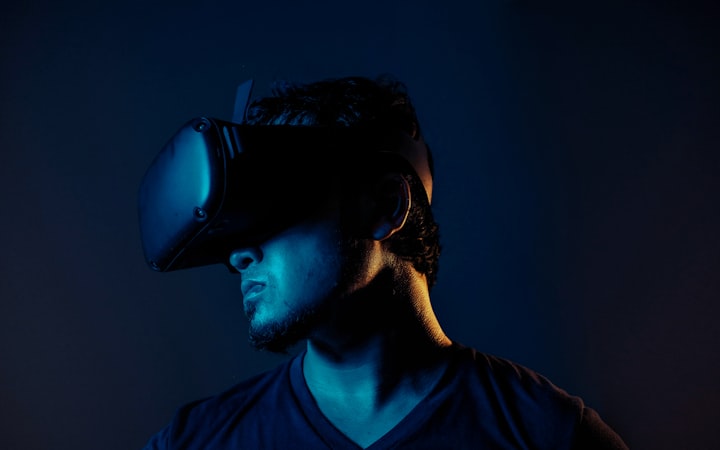Virtual reality (VR) is a technology that allows you to experience and interact with computer-generated environments in a fully immersive way. It uses headsets, controllers, and other devices to create a simulated world that users can explore and interact with. VR has become increasingly popular in recent years, with applications and entertainment, education, healthcare, and other fields. So, Let's figure out a bit more about the virtual reality world and its potential to transform our lives.
Virtual reality works by using a headset, also known as a VR headset, to display a 3D image that covers the user's entire field of vision. The headset contains a screen, lenses, and sensors that track the user's head movements. Which allows them to look around and explore the virtual environment. VR headsets also come with motion controllers, which are handheld devices that allow us to interact with the virtual environment.
Virtual reality (VR) allows users to interact with computer-generated simulations of real-world environments. VR is achieved by using specialized VR headsets, which display stereoscopic images to create the illusion of depth and a sense of immersion. VR also has a variety of applications and is used in many fields, including entertainment, education, healthcare, and other types of training.
VR allows users players to experience immersive and realistic gameplay. VR games can be played on a variety of platforms, including gaming consoles, PCs, and mobile devices. VR is used in education to create immersive learning experiences, allowing students to explore historical sites, scientific phenomena, and other environments in a virtual setting. It's used in healthcare to train medical professionals, provide virtual therapy to patients with anxiety and depression, and create virtual simulations of surgical procedures. Did you know that VR is also used in architecture? They use this to create virtual walkthroughs of buildings and urban environments, which allows architects and developers to visualize their designs realistically.
Virtual reality provides a fully immersive experience that allows users to feel like they are in another place or time. It can be used to provide immersive learning experiences, such as virtual field trips or simulations of historical events. Virtual reality can be used for gaming, movies, and other forms of entertainment, providing an immersive and engaging experience. It can also be used in healthcare, it can be used for medical training, therapy, rehabilitation, and providing a realistic and immersive experience for patients and healthcare professionals.
Virtual reality provides immersive and realistic experiences, allowing users to explore new environments, engage in realistic activities, and interact with virtual objects. VR can be used in therapy to help treat patients with phobias, PTSD, and other conditions, by exposing them to virtual environments that allow them to face their fears. Virtual reality can also be used for remote collaboration and communication, allowing people to meet and interact in a virtual setting regardless of their physical location. Overall, Virtual reality has the potential to revolutionize many industries and provide new and innovative ways to interact with the world.
However, there are also some disadvantages of virtual reality as well, like the cost, a VR headset is not cheap, especially if you add in all the other equipment that you need to use it, along with games, movies, and other entertainment, making buying it inaccessible to some people. Virtual reality can also be isolating, as users are immersed in a virtual world and may not be aware of their surroundings or other people. Some users may also notice morning sickness when using VR, especially if the virtual environment is moving or changing rapidly. VR also collects data about user's movements and interactions, which can raise a concern about privacy and data security. And lastly, VR may not be accessible to people with certain disabilities, such as vision or mobility impairments.







Comments
There are no comments for this story
Be the first to respond and start the conversation.